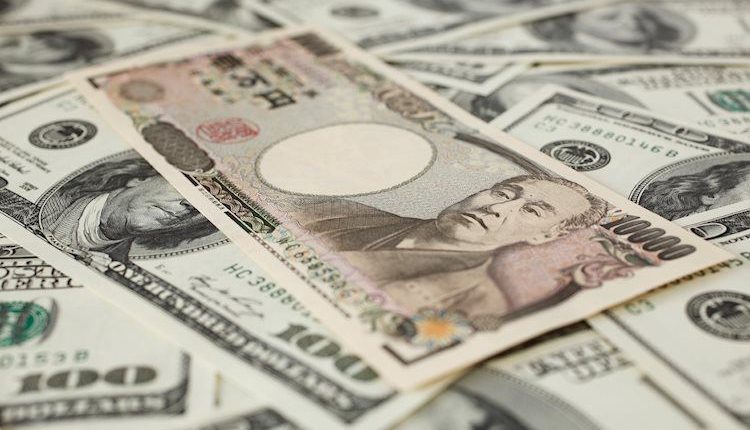- Japanese Yen declines against the US Dollar due to broad risk aversion on Israel-Palestine tensions.
- FX market intervention from the Japanese authorities may have propped up the weakening Yen as USD/JPY passed the 150 threshold.
- In the US session, USD weakens after a raft of US data releases, including GDP and Jobless Claims.
The Japanese Yen (JPY) has pulled back against the US Dollar on Thursday, but the USD/JPY is up just 18 basis points in the session to 150.30 at the time of writing. This is well below the pair’s intraday high of 150.7780.
USD/JPY yo-yos in a wide range versus the US Dollar (USD) as numerous factors impact the pair, from increasing tensions on the Gaza strip to the release of key US data and the rumored intervention of Japanese authorities in the FX markets.
The Yen weakened initially versus the USD, which benefited from safe-haven flows and higher US yields. JPY was later supported by probable intervention from the Japanese Ministry of Finance (MoF) after the USD/JPY rate crossed the 150 defensive line – a level traditionally defended by the MoF.
US data on Thursday shows an unexpected rise in America’s GDP to 4.9% in Q3 on an annualized basis, solidly beating consensus estimates of 4.2%. US Durable Goods Orders rose 4.7% versus estimates of 1.5% and Initial Jobless Claims increased to 210K versus 208K expected. Despite being mostly positive, the data fails to help the Dollar, and the US Dollar Index (DXY) registers a drop after the data, with DXY down a 10th of a percentage point just over an hour after the releases.
Daily digest market movers: Japanese Yen
- The Japanese Yen weakens versus USD on Thursday amid increased risk aversion due to intensifying Middle East tensions.
- The US Dollar also finds support from a rise in the highly-correlated US 10-year Treasury yield, which reaches to within a hair’s breadth of 5.00%, as a result of improving US business activity data.
- The USD/JPY pair briefly shoots to 150.80 in the early European session but then abruptly reverses, possibly as a result of Japanese MoF intervention.
- USD/JPY then encounters further volatility after the release of US data showing unexpected rises in GDP and US Durable Goods Orders.
- Initial Jobless Claims rise more than expected to 210K but the figure is still at historic lows.
- The yield on the 10-year Japanese Government Bond (JGB) also rises again to trade at 0.885% on Thursday. This is closer to the Bank of Japan’s Yield Curve Control (YCC) threshold of 1.0%, which if touched will likely lead to the BoJ implementing further easing. This will probably have a negative impact on the Yen but be bullish for USD/JPY.
Japanese Yen technical analysis: Breaking above 150 but lacking momentum
USD/JPY has broken above the key 150 psychological level on Thursday as the overall uptrend extends. The pair is bullish on a long-term, intermediate and short-term basis.
The uptrend is biased to continue given the absence of reversal signs and the next major target is at the 152.00 highs achieved in October 2022.
The pair has completed what appears to be an ascending triangle on the daily chart and broken above the 150.16 highs of October 3, confirming a breakout. Although it has not been a particularly decisive breakout – Thursday’s breakout candle is a ‘Doji’ indicating indecision – price will, nevertheless, probably continue higher, given the overarching uptrend. The triangle’s technical target is at around 152.
US Dollar vs Japanese Yen: Daily Chart
The Moving Average Convergence Divergence (MACD) momentum indicator is showing bearish divergence with price when compared with the October 3 high. This happens when price makes a higher high, but momentum fails to follow suit. This is indicative of underlying weakness in the upmove. This nuances the bullish analysis and increases the risk the triangle breakout may be ‘false’.
A re-break above Thursday’s highs of 150.80 would provide fresh confirmation of the continued advance.
Triangles are sometimes the penultimate formations in a trend, suggesting the chance the current uptrend may be getting near to its culmination point.
Japanese Yen FAQs
The Japanese Yen (JPY) is one of the world’s most traded currencies. Its value is broadly determined by the performance of the Japanese economy, but more specifically by the Bank of Japan’s policy, the differential between Japanese and US bond yields, or risk sentiment among traders, among other factors.
One of the Bank of Japan’s mandates is currency control, so its moves are key for the Yen. The BoJ has directly intervened in currency markets sometimes, generally to lower the value of the Yen, although it refrains from doing it often due to political concerns of its main trading partners. The current BoJ ultra-loose monetary policy, based on massive stimulus to the economy, has caused the Yen to depreciate against its main currency peers. This process has exacerbated more recently due to an increasing policy divergence between the Bank of Japan and other main central banks, which have opted to increase interest rates sharply to fight decades-high levels of inflation.
The BoJ’s stance of sticking to ultra-loose monetary policy has led to a widening policy divergence with other central banks, particularly with the US Federal Reserve. This supports a widening of the differential between the 10-year US and Japanese bonds, which favors the US Dollar against the Japanese Yen.
The Japanese Yen is often seen as a safe-haven investment. This means that in times of market stress, investors are more likely to put their money in the Japanese currency due to its supposed reliability and stability. Turbulent times are likely to strengthen the Yen’s value against other currencies seen as more risky to invest in.
Read the full article here

